Warships. Cruisers. Life of wonderful goddesses
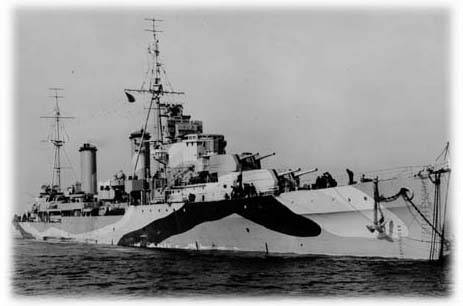
The appearance of these cruisers was due to some disappointment with the Linder-class cruisers, which turned out to be not entirely suitable for the role of destroyer leaders, since, in the opinion of the naval command, they did not have the proper maneuverability. Plus a high silhouette, which nullified the possibility of covert movement of the leader with destroyers.
Otherwise, the Linders were quite successful ships.
Remembering the experience of building scout cruisers during the First World War, it was decided to develop reconnaissance cruisers based on the Linder that would be more suitable for reconnaissance and leading destroyers.
After reviewing several designs, the Admiralty leaned towards a cruiser project, somewhat smaller than the Linder, armed with six 152-mm guns in three turrets and weaker armor.
This is how the Arethusa-class light cruiser was born. In general, a smaller version of the Linder-class cruisers.
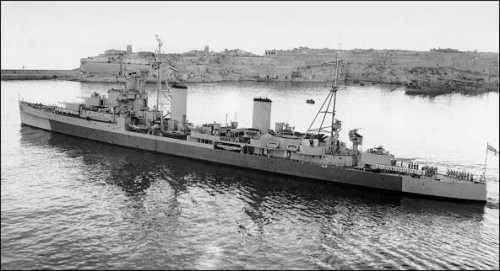
Four cruisers of the Aretuza project were ordered. The ships were named Aretheusa, Galatea, Penelope and Aurora.
All titles were inherited and traditional in British navy. The type of cruisers "Aretyuza" itself was already during the First World War, however, it was somewhat more numerous than the new one.
The names "Aretheusa" and "Penelope" were used in the British Navy for the seventh time, "Galatea" for the eighth, and "Aurora" for the tenth.
On trials, the Arethuse showed simply excellent seaworthiness compared to the Linder. The ship was more manageable, there were no vibrations typical for British cruisers at full speed in the stern.
The speed of the ship, which exceeded 32 knots, completely allowed the destroyers to lead. In parallel with the tests, a debate began on strengthening anti-aircraft weapons. As a result, it was decided to replace single-barreled 102-mm anti-aircraft guns with twin installations of the same caliber.
The Aurora underwent some changes during construction: the cruiser lost its aviation equipment and aircraft in the stern, and premises were installed on the vacated areas, in which it was supposed to house the headquarters of the destroyer flotilla.
In the construction of these cruisers, wherever possible, electric welding was used, which greatly facilitated the construction of ships. The final displacement turned out to be even lower than the design one, 5 tons instead of 220.
The layout of the ships turned out to be similar to the Amphion / Perth export project, but the Aretuza turned out to be 15 meters shorter.
Dimensions of cruisers of the type "Aretyuza":
- length between perpendiculars - 146,3 m;
- the greatest length - 154,23 m;
- maximum width - 15,55 m;
- nose draft - 4,03 m;
- stern draft - 4,65 m (at full load 5,4 m).
Reservation
The armor of the cruisers corresponded to the armor of the Amphion-class cruisers, but the thickness was less.
The armored belt made of non-cemented homogeneous steel 57 mm thick was reinforced with a lining 12,7 mm thick made of medium carbon steel. The belt had a length of 101 meters, vertically reached the upper deck, and in the engine room area - to the lower deck, covering the entire power plant of the ship.
An armored deck 25,4 mm thick rested on the armored belt, the traverses of the armored belt had a thickness of 25 mm. Steering machines were armored with a box with a wall thickness of 25 mm.
The charging cellars were armored along the sides with armor 95 mm thick, on the other sides the thickness was 51 mm. Cellars with shells were armored with sheets 25,4 mm thick.
Towers of the main caliber had a thickness of around 25,4 mm. Barbettes were armored lighter, only 19 mm. The cabin and command posts were protected by sheets with a thickness of 19 to 25 mm.
In general, cruiser armor was designed to protect ships from light gun shells and shrapnel.
Power plant
The power plant of the cruisers consisted of 4 Parsons turbo-gear units and 4 three-collector Admiralty-type boilers. All boilers had forced mode. The boilers and turbines were arranged in pairs in an echelon manner. In front of the boiler room in the bow of the ship was a parking boiler, providing steam to the turbines to generate electricity during stops.
Each TZAK developed a power of 16 hp. On sea trials, Aretheusa showed a speed of 000 knots with a maximum power of 32,62 hp. and with standard loading. At maximum load (in / and 64 tons), the speed dropped to 470 knots.
The cruising range reached 5 miles at a 500-knot course or 15 miles at a speed of 8 knots.
Crew and habitability
The crew of cruisers of the type "Aretyuza" according to the pre-war schedule consisted of 506 people. During the war years, as radar stations and additional anti-aircraft weapons were installed, the number of crews grew. The Galatea had a crew of 619, the Penelope had 623.
Living conditions were standard for British ships, that is, they did not differ in special luxury. Of the "excesses" was only forced ventilation of the living quarters of the crew.
weaponry
Main caliber
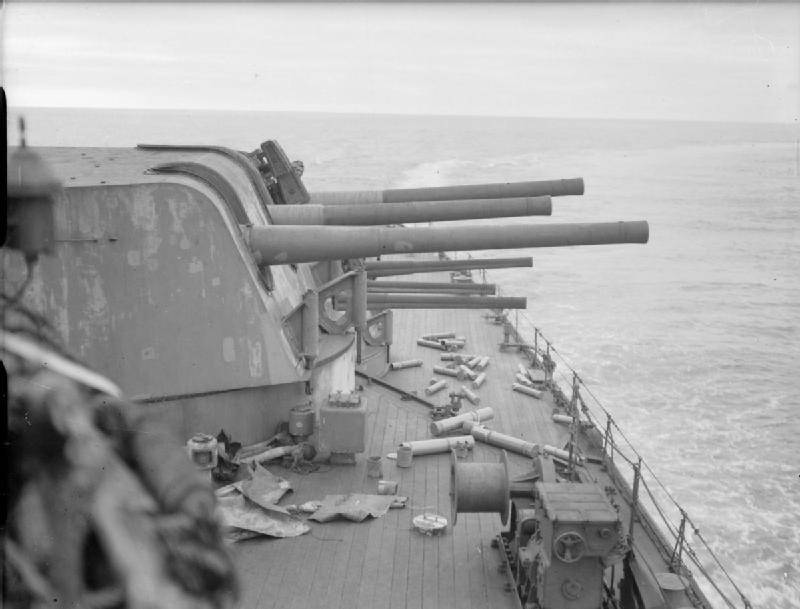
The same classic 152-mm Mk.XXIII guns in three Mk.XXI twin turrets served as the main caliber. The towers rotated using a hydraulic drive, the speed of horizontal guidance was 10 degrees per second, vertical - 7. The trunks could be guided in a vertical plane individually. The angles of rotation of the towers were very decent, about 150 degrees.
The gun was innovative, it was in it that the British abandoned the classic scheme for making a barrel by winding wire and switched to a monoblock, fastened to the bolt.
The gun could throw a projectile weighing 50,8 kg with an initial speed of 841 m/s at a distance of 23 m. that is, 300-10 shots per minute.
Shells, semi-armor-piercing and high-explosive, weighed the same, which had a positive effect when changing the type of projectile in battle. The ammunition load was 200 rounds per gun.
The fire control of the main caliber guns was carried out from the director, who was equipped with a stabilized sight, a 4,57 m rangefinder and a mechanical ballistic computer.
Auxiliary / anti-aircraft weapons
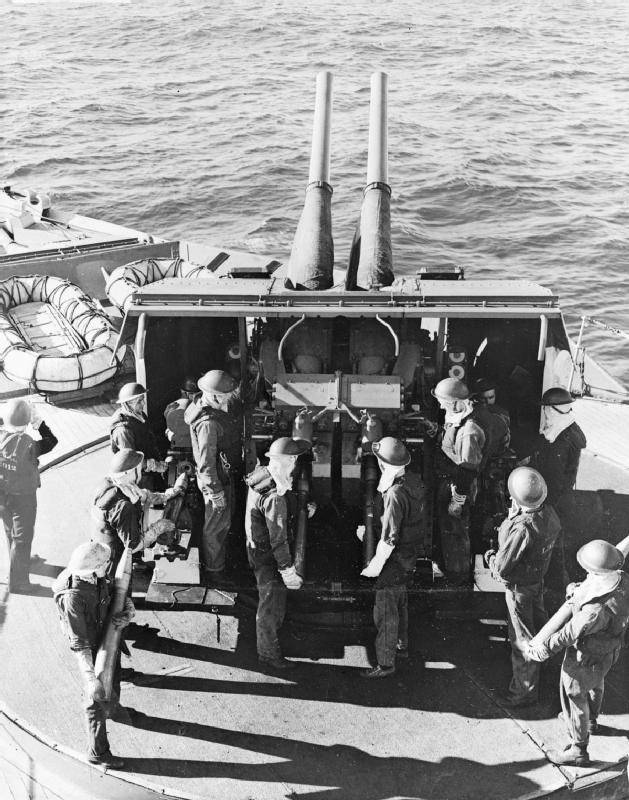
Initially, the universal caliber of cruisers consisted of four 102-mm Mk.V guns.
However, in 1936, a more modern Mk.XVI gun was put into service, and it was with the twin installations of these guns that the ships were re-equipped, and with the Penelope and Aurora this happened at the construction stage, the other two ships were re-equipped during the modernization of 1939 of the year.
The new gun fired a high-explosive projectile at a distance of 18 km at an initial speed of 811 m/s. Rate of fire 18-20 rounds per minute. The ammunition also had a semi-armor-piercing projectile, the presence of which significantly expanded the range of application of the gun.
There were also disadvantages. The cellars of anti-aircraft guns were located very far from the guns themselves. This happened due to the fact that on the "Linders" the guns were located near the cut of the forecastle, and on the "Aretyuzas" they were significantly shifted to the bow. The shells from the cellars had to be mixed on carts along rails laid along the upper deck. How convenient it was during a storm or on an icy deck in the northern seas - one can only imagine.
The short-range anti-aircraft armament consisted of two four-barreled 12,7-mm Vickers machine guns, which were installed in the area of the first pipe.
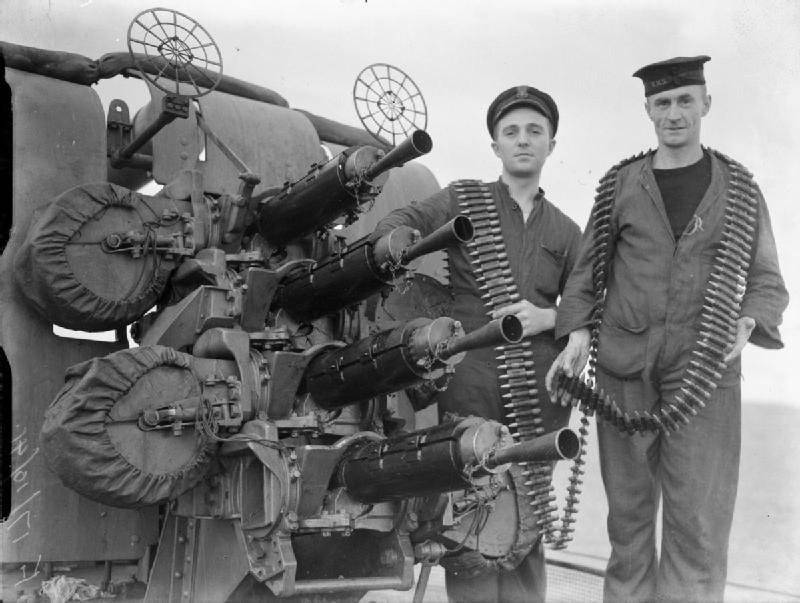
Torpedo armament
Torpedo armament consisted of 2 triple-tube 533-mm TR.IV torpedo tubes. Ammunition consisted of 6 torpedoes in vehicles and one spare torpedo.
Mine weapons
To protect against anchor mines, the ships had guard paravanes. As part of the fight against German magnetic mines, a degaussing system was installed on all cruisers.
Aviation Armament
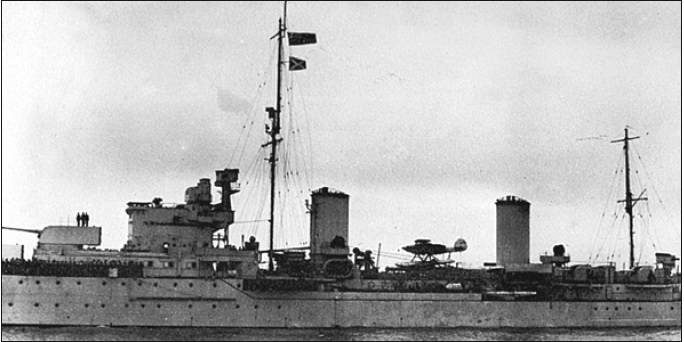
On the first three ships of the series (except for the Aurora) were equipped with rotary catapults DIL (Deck Mk.I Light) 14 m long with a powder launch.
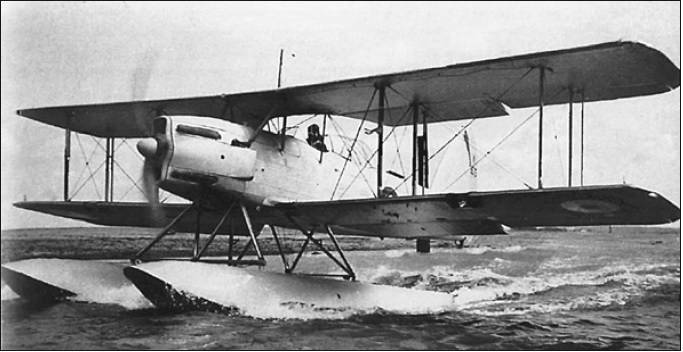
Initially, each cruiser was supposed to have one Hawker Osprey aircraft, then the option of increasing the air group to two aircraft was considered. The first aircraft was to be placed between the pipes, the second - on the aft superstructure.
After testing such a kit on the Arethuse, the second aircraft was decisively abandoned.
Detection tools
During construction, the cruisers received an ASDIC Type 128 submarine search sonar station and a radio direction finder that worked on medium waves.
Upgrades
Already at the beginning of military service (the Norwegian campaign and the evacuation from Dunkirk), it became clear that anti-aircraft weapons were frankly weak and needed to be strengthened. But the small size of the ships simply did not allow the installation of additional guns.
Therefore, at the end of 1940, aviation equipment was dismantled from all cruisers, and from the Aurora, a headquarters superstructure in the stern. Two four-barreled installations of 40-mm pom-pom machine guns from Vickers were installed on the vacant seats. In addition, 20-barrel launchers for unguided rockets were installed on the Arethuse and Aurora at the stern, which, however, did not show their effectiveness and were dismantled after a short time.
In 1941, the Galatea received 20 mm Oerlikon assault rifles, which replaced the 12,7 mm machine gun mounts. In 1943, during repairs in the United States, Aretuza received four-barreled Bofors 40-mm installations.
In early 1941, radar equipment began to be mounted on cruisers. To do this, the masts were replaced with more suitable for carrying antennas, three-legged structures. The cruiser war ended (who finished), using virtually all the radars that were produced in the UK:
- detection of air targets Type 279, 281, 286, 290;
- detection of surface targets Type 272, 273;
- fire control of the main caliber Type 283, 284;
- anti-aircraft fire control Type 282, 285.
"Aretuza" ended the war in this configuration of weapons:
- 3 x 2 guns 152 mm;
- 4 x 2 guns 102 mm;
- 2 x 4 machine guns 40-mm "Bofors";
- 4 x 2 and 8 x 1 Oerlikon 20-mm assault rifles;
- 2 x 3 torpedo tubes 533 mm.
Combat application
Arethusa
The baptism of fire for Arethuse was the participation in February 1940 of the year in the search operation of the German tanker Altmark, which was accompanied by the heavy cruiser Admiral Graf Spee. On February 17, the Aretuza and the destroyers located the tanker but failed to capture it.
Participation in the Norwegian campaign in May 1940 ended quickly. "Aretuza" was engaged in escort service and escort of landing craft.
On May 24, the cruiser was damaged as a result of a raid by German aircraft, which also sank the destroyer Wessex while trying to shell German troops at Calais.
Further, the cruiser took a direct part in the evacuation of British troops from France. After the operation, the ship was sent for repairs, at the exit of which the Aretuza collided with a merchant ship and again went for repairs.
After the end of the repair, which lasted almost a year, in the middle of 1941, the ship was sent to serve in the Mediterranean.
In November 1941, the cruiser, while carrying out the task of escorting transports to Malta, was attacked by Italian aircraft. The Italians rose to the occasion and fired a torpedo into the side of the Aretheus. The explosion tore apart the side, making a hole measuring 18 x 12 meters and setting fire to the contents of one of the fuel tanks.
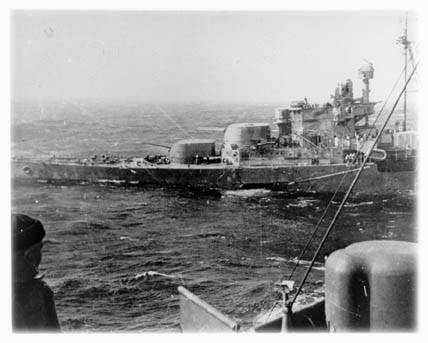
The losses of the crew amounted to only 156 dead, the crew fought heroically with fire and water and won. The cruiser remained afloat, was towed to Alexandria and docked.
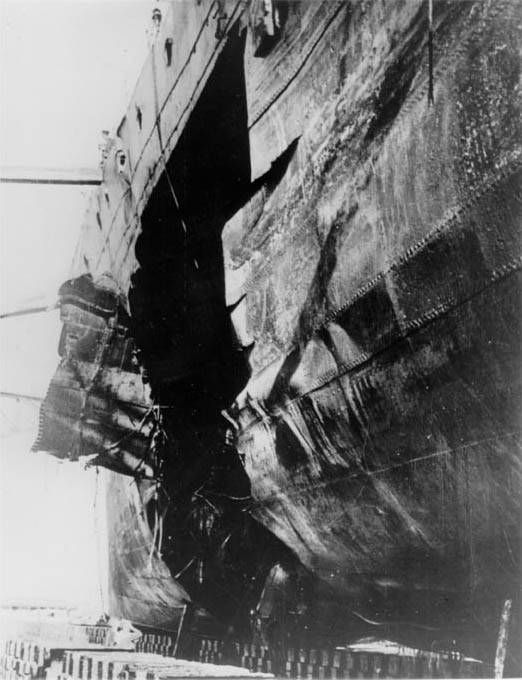
The repair lasted until February 1943, after which the Arethuse was sent to the United States for modernization. The cruiser returned to service only at the beginning of 1944.
In May 1944, the Arethusa took part in the Normandy landings. On May 24, the cruiser was again damaged, this time from a German magnetic mine at the mouth of the Seine. Repairs continued until the end of August 1944, after which World War II ended for the cruiser.
After the war, the Admiralty decided that light cruisers did not make sense to modernize. They wanted to sell Aretuza to Norway, but the deal did not take place. In 1950, the ship was scrapped for metal at Newport.
Galatea
The first place of service of the ship was the Mediterranean Sea. The cruiser for four years was the leader of the destroyers commanded by Rear Admiral Cunningham.
The ship participated in political actions such as patrolling the coast of Spain, where the Civil War was going on, moreover, together with the German heavy cruiser Deutschland. Cunningham was replaced by Rear Admiral Somerville. And the third who held the flag of the leader of the destroying forces of the Mediterranean on the Galatea was Rear Admiral John Tovey.
So it turned out that three admirals, who during the war held the highest positions in the Royal Navy, at one time held the flag on the Galatea. The concept of a "happy ship" in the British Navy is not an empty phrase.
In 1940, the cruiser hunted German blockade breakers in the Atlantic along with the aircraft carrier Ark Royal and the battlecruiser Rinaun. Six ships with strategic cargoes for Germany were intercepted.
Further, the cruiser, as part of a detachment of ships, counteracted the Germans in Norway. But the Germans landed earlier, and the detachment was subjected to massive attacks by the Luftwaffe. The Germans sank the destroyer "Gurkh", the cruiser was not damaged.
Despite the landing of the Germans in Norway, the British command decided to land. The Galatea, as part of a detachment of ships, took troops on board and first landed units in Ondalsnes, and then evacuated them from there. This ended the Norwegian campaign for Galatea.
With the beginning of the defeat of the troops in France, the cruiser accompanied the ships that exported the gold reserves of Holland to Britain, provided artillery support near Calais, and took the British embassy in France to their homeland.
In early July 1940, Galatea was assigned to a detachment to counter the landing of German troops in Britain. The ships patrolled the southwestern part of the North Sea in anticipation of German ships.
On September 6, the Galatea, when entering the next patrol, was blown up by a bottom mine. The damage was not severe, but repairs continued from October 1940 to January 1941. At the same time, they carried out the only modernization of weapons.
After the repair, the cruiser again patrolled the passage between Iceland and the Faroe Islands, accompanied minelayers to lay mines.
"Galatea" became participants in the pursuit of "Bismarck", escorting the aircraft carrier "Victories".
After the operation against the Bismarck, the cruiser was transferred to the Mediterranean Sea. The passage to Alexandria was carried out through the Cape of Good Hope. Upon arrival in the Mediterranean, the Galatea, along with the cruiser Naiad, covered the port with its guns from the threat from the air.
The cruiser participated in the campaign on November 23-25, 1941, when the German submarine U-331 sank the battleship Barham.
December 8, 1941 "Galatea" together with the cruisers "Evrial", "Naiad", and the destroyers "Hotspur" and "Griffin" carried out a raid operation to shell Italian communications near Eastern Cyrenaica.
On December 13, the cruisers Naiad, Galatea and Euryal went to intercept three enemy convoys from Taranto. It soon became clear that the convoys were being covered by Italian battleships and the cruisers were withdrawn. On the way back, literally 30 miles from Alexandria, a detachment of ships of the British fleet ran into a curtain of German submarines.
Around midnight on the night of December 14-15, 1941, the German submarine U-557 fired a salvo from the bow tubes at the Galatea. The cruiser was hit by three torpedoes and the ship sank in less than three minutes. Escort destroyers rescued 150 people, but most of the crew, 22 officers and 447 sailors, including the ship's commander, died.
"Penelope"
The beginning of the war, the cruiser "Penelope" met in Malta as part of the 3rd squadron of cruisers of the Mediterranean Fleet of Great Britain. In April 1940 he was transferred to the north and participated in the Norwegian campaign. For four whole days.
The cruiser covered the Allied troops at Narvik, however, missing the German destroyers, which eventually captured Narvik. Covered the withdrawal of the remnants of the 2nd destroyer flotilla after the First Battle of Narvik, received minor damage from German aircraft. On April 11, the cruiser jumped onto the rocks and received damage to the bottom. The boiler rooms were flooded. The Kreuzser was removed from the stones and sent for repairs, which lasted until July 1941.
The damage to the bottom turned out to be so serious that "the ship had to be rebuilt below the waterline." At the same time, they removed the catapult, installed radars and strengthened air defense.
Then the cruiser was transferred to the Mediterranean Sea, where he, together with the Aurora and the destroyers Lance and Lively, formed the “Connection K”, which was supposed to deal with the violation of convoys to Africa by the Germans and Italians.
On November 8-9, 1941, as part of Operation Duisburg, Connection K left Malta to intercept a large Italian convoy (7 ships and 6 escort destroyers). The heavy cruisers Trento and Trieste with four more destroyers covered the convoy.
Despite the superiority of the Italians in ships, barrels and calibers, the British sank all seven ships, 5 bulk carriers and 2 tankers. "Penelope" chalked up the sunken destroyer "Fulmine". The Italian ships were unable to inflict any damage on the British.
November 24, 1941. A convoy of two German transports ("Procida" and "Maritsa") was intercepted, two Italian destroyers covering the ships fled without accepting the battle. The transports were sunk.
December 1, 1941. "Compound K" intercepted the auxiliary ship of the Italian Navy "Adriatica", the tanker "Iridio Mantovani" and the destroyer "Alvise da Mosto" en route to Tripoli. All Italian ships were sunk.
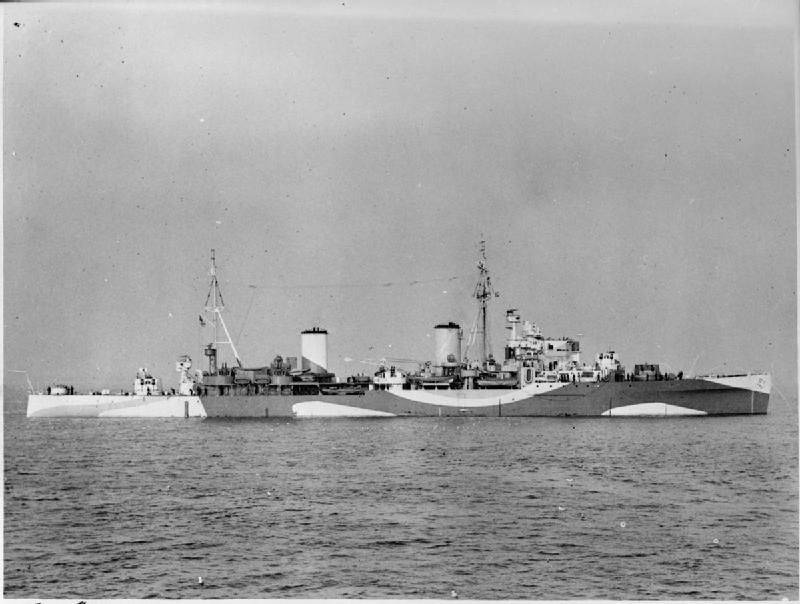
December 17, 1941. "First Battle of Sirte." The British dragged a convoy from Alexandria to Malta, the Italians escorted a convoy to Africa. Considering that the Italian forces consisted of 3 battleships, 2 heavy cruisers and 10 destroyers, everything could have ended more than sadly.
Night of December 18-19, 1941. Formations "B" (cruisers "Neptune" and "Ajax", destroyers "Kimberley" and "Kandahar") and "K" went on another search for Tripoli. First, in a previously unknown minefield, the Neptune was blown up by two mines, then the Aurora, then the mine exploded in the Penelope's paravane. The ships were 20 miles from Tripoli, in the zone of enemy aviation.
The Aurora was dragged to Malta by two destroyers, the rest began a rescue operation with the Neptune. Two hours later, "Neptune" drifted to the third mine, "Kandahar" was blown up behind it, and at 4 o'clock in the morning "Neptune" was blown up for the fourth time. The cruiser sank, only one person escaped from it.
On this, the activity of the “K” Compound ended. Of his ships, only the Penelope and the Lively remained combat-ready. However, in three months, two cruisers and two destroyers practically paralyzed the supply of Rommel's corps in Africa, which received no more than 10% of the requested cargo. Plus, 11 transports and 3 Italian destroyers were destroyed by ships.
Further, the hunt for Italian ships ceased, the British ships in Malta experienced a lack of fuel and therefore participated only in the posting of their convoys. At the same time, enemy aircraft began to intensively attack ships in Malta.
"Penelope" became participants in the Second Battle of Sirte. The convoy was delivered to Malta. The Penelope takes damage from an aerial bomb that explodes under the very side. Further, enemy aircraft began trying to finish off the damaged cruiser. For a week, the Penelope anti-aircraft guns fired 6500 shells, the barrel life was practically shot. But nevertheless, the somehow patched cruiser was able to go to Gibraltar for normal repairs. Hundreds of wooden plugs protruded from the sides, with which small holes were temporarily sealed.
A photo of the ship in this form brought the Penelope the playful nickname "Pepperpot".
From Gibraltar, the ship went to New York for repairs, which lasted until the end of August 1942.
In 1943, after repairs, the Penelope returned to the Mediterranean. The cruiser is involved in numerous Allied landing operations, including the landing in Sicily (Operation Husky) and the landing in Taranto.
October 7, 1943, during the operation to capture the Dodecanese Islands, which ended in failure, the Penelope with the cruiser Sirius and the destroyers Faulknor and Fury intercepted a German convoy heading for the island of Kos. The anti-submarine ship UJ-2111, the Olympos transport and six landing barges were destroyed from the convoy. Only one barge survived.
On February 18, 1944, at 7.30:410 am, the cruiser returning to Naples from Anzio was torpedoed by the German submarine U-417. Together with the ship, 619 people died out of XNUMX.
The Penelope was the last British cruiser to die in World War II. Among other merits, the ship holds a record for the number of aircraft shot down - 7 out of 97 reliably destroyed by British cruisers during the war years.
"Aurora"
The first combat campaign of the Aurora took place on September 6-10, 1939, as part of a detachment of ships that were looking for German transports and covering them with German ships.
On September 25-26, together with the cruisers of the 2nd squadron, he assisted the Spearfish submarine.
On October 7, the cruiser went to sea to intercept a group of German ships consisting of the battleship Gneisenau, the cruiser Cologne and 9 destroyers. The interception failed, all ships returned to their bases.
Together with the Edinburgh and Southampton, he participated in the interception of the Scharnhorst and Gneisenau, which attacked a convoy in the North Sea and sank the auxiliary cruiser Rawalpindi.
Then there was participation in the Norwegian campaign.
In April 1940, the Aurora covered transports with troops going to Norway. The Germans outstripped the British and landed first. The British retaliated. April 24 "Aurora" with the battleship "Resolution" fired at German positions on the coast of Baysfjord, but to no avail due to poor visibility. Then there was an amphibious landing in the Bjerkvik area.
On May 18, the Aurora received a direct hit from a 250-kg bomb from a German bomber and was forced to leave for repairs. During the repair, air defense was strengthened by installing two quad "pom-pom" installations and missile launchers aft.
Then there was the hunt for the Bismarck, in which the Aurora covered the aircraft carrier Victories. After the hunt, the Aurora was sent to the Atlantic to search for and sink German supply ships. June 3 "Aurora" and "Kenya" discovered and sank the tanker "Belchen", which refueled German submarines.
In the summer of 1941, the Aurora, with the cruiser Nigeria and the destroyers Tartar and Punjab, was sent to the Arctic. The ships went to Svalbard, landed the Norwegian commandant there, burned the weather station on Bear Island.
The second time the Aurora, as part of a detachment of ships, took Soviet and Norwegian workers from Svalbard in September, the British burned half a million tons of mined coal, destroyed mines and weather stations.
On September 5, the cruiser, together with the "Nigeria", went to intercept a German convoy going with replenishment to the northern flank of the Soviet-German front. Two large transports, accompanied by the Bremse artillery training ship and several trawlers.
As a result of the battle, the Bremse (4 127-mm guns) was sunk, but the German crew covered the ships with a smoke screen and the transports took refuge in fiords where the British did not dare to enter.
Further, the Aurora was transferred to the Mediterranean Sea and became part of the "Connection K" along with the cruiser "Penelope".
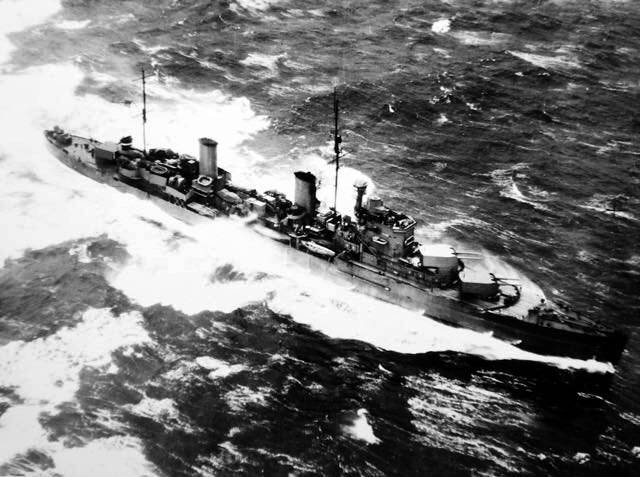
During Operation Duisburg, the Aurora led the column, and the cruiser's guns damaged the Italian destroyers Grecale, Euro, and Bersalier, the Minititlan tanker was sunk by artillery, and two of the seven transports sunk by torpedoes.
In the next operation (the sinking of the Maritsa and Procida), the cruiser was not noted, but on December 1, it was the Aurora gunners who made the main contribution to the sinking of the Adriatic liner, and on December 2, the destroyer Apvise da Mosto and the tanker Iridio Mantovani ".
December 19, 1941 "Aurora" was blown up by a mine. The list reached 11 degrees, but was leveled by counter-flooding. The hull set was damaged over a distance of 40 m, the elevators of the bow towers jammed, and electrical equipment was damaged. Speed dropped to 10 knots. The cruiser reached La Valletta, where it stood in the dock for three months. After the repair, the ship went to Liverpool for a more thorough repair.
The ship was returned to service only in October 1942.
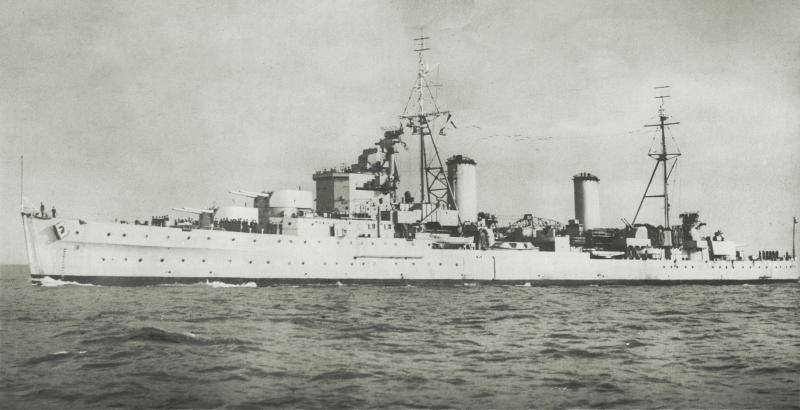
Aurora took part in Operation Torch to land troops in French Africa. In October 1942, the cruiser operated against the port of Oran. When the landings began, the French sank two American landing ships (Walney and Heartland) and tried to drive off the Allied ships by attack. "Aurora" entered into battle with the French destroyers "Tramontane", "Torando" and "Typhon".
The battle for the French proved fatal. "Tramontan", having lost the bridge, officers and half of the artillery, threw herself ashore. The Tornado managed to launch six torpedoes, but was also damaged by shells and also threw itself into shallow water. Only Typhon returned to the port after an unsuccessful battle. And even then, having lost one pipe and guns.
Some time later, the Typhon and the leader of the Epervier made a new attempt to break through. The Aurora and the cruiser Jamaica, plus the destroyers Boadicea, Brilliant, and Call, blocked the exit from the harbor. The Epervier became the third French ship to run ashore. "Typhon" again returned to the port and there the crew blew it up.
On the night of December 2, 1942, the Aurora, along with the cruisers Argonaut and Sirius, with the destroyers Kiferon and Quentin, attacked an Italian convoy of four transports, three destroyers and two destroyers.
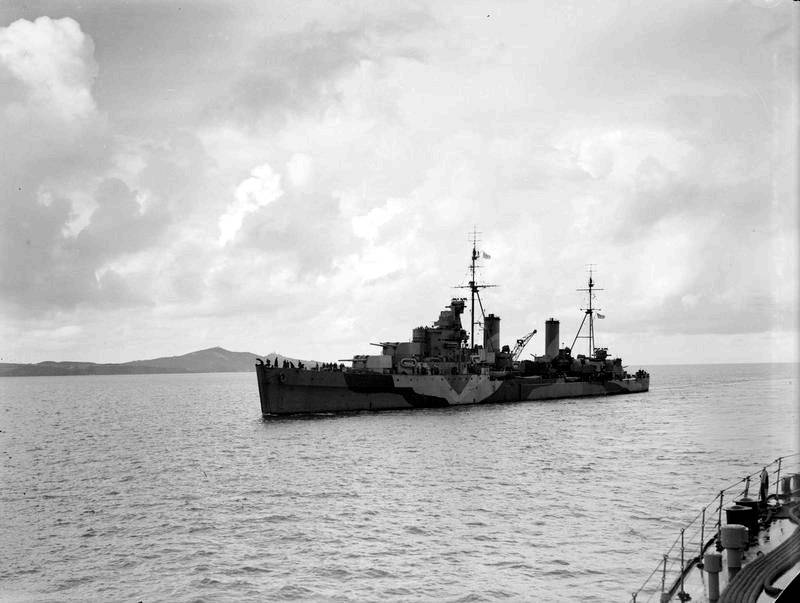
In the artillery battle, the destroyer Folgore was sunk (the honor went to the Aurora), the Nicolas da Recco was damaged and lost its course. He was dragged in tow by the destroyer Antonio Pigafetta.
The ships of the convoy managed to disperse while the British dealt with the escort, but thanks to the radar, the British ships found and sank all the ships of the convoy. The German military transport KT-1, the Italian "Aventino", "Puccini" and "Aspromonte" went to the bottom along with cargoes so necessary in Africa.
On the way back, the German aviation “wetted the score” a little by sinking the destroyer Quentin.
Further, the Aurora, as part of a detachment of ships, covered the landings that captured the islands in the Strait of Tunisia. On June 20, the cruiser was honored to receive the monarch George VI on board.
October 30, 1943 "Aurora" received heavy damage from the actions of German aviation. Ju.87 caught the cruiser near the island of Kastellorizon and hit with a 500-kg bomb behind the second tube. The left bow installation of 102-mm was thrown overboard by an explosion, the rest were out of order. The pom-pom of the left side, the torpedo tube, three Oerlikons, the stern radar - everything was disabled. 46 officers and sailors were killed.
However, the fires were extinguished and the cruiser reached Alexandria, where it was patched up and sent to Taranto, the former main base of the Italian fleet. There, repairs were made and two paired Oerlikon units with an electric drive were installed.
The cruiser took a direct part in the fighting on the islands of the Aegean Sea, from where the Germans and Italians had to be kicked out. On October 15, the ship participated in the operation to liberate Athens. The Aurora remained in Greek waters until the middle of 1946.
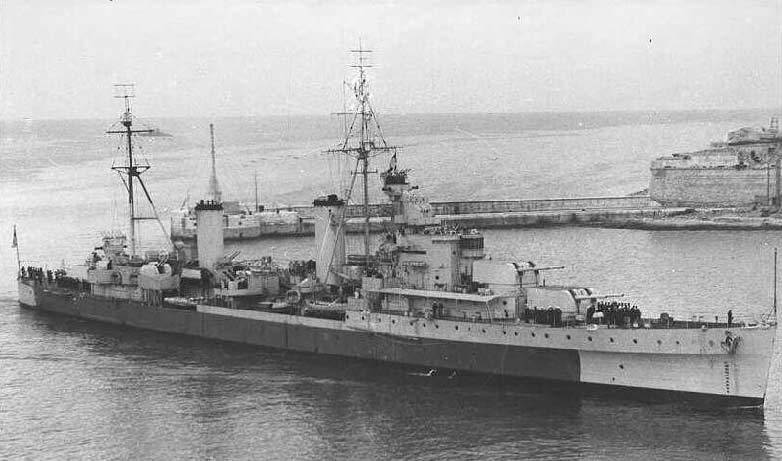
In early 1948, an agreement was reached to sell the Aurora to China. On May 19, 1948, the cruiser was handed over to the Chinese side in Portsmouth. The ship was named "Chongqing" and served in the Kuomintang fleet until March 1949, after which it was scuttled by its crew. In 1951, with the help of Soviet specialists, it was raised, but the warship's career ended and after 1960 the cruiser was cut into metal.
What can be said as a result? Yes, only one thing: God forbid all ships serve as these light cruisers shook. Yes, they did not have a huge number of trunks. Yes, they were not comfortable. Yes, the armor left a lot to be desired. The only question is how correctly these ships could be used by the crews. Judging by the results, the ships were lucky with those who fought on them. Hence the figures.
The life of these wonderful goddesses was successful precisely in the sense that it is not a shame for the years spent aimlessly. The Arethuses were not spectacular, but they were more than effective. And is it important.
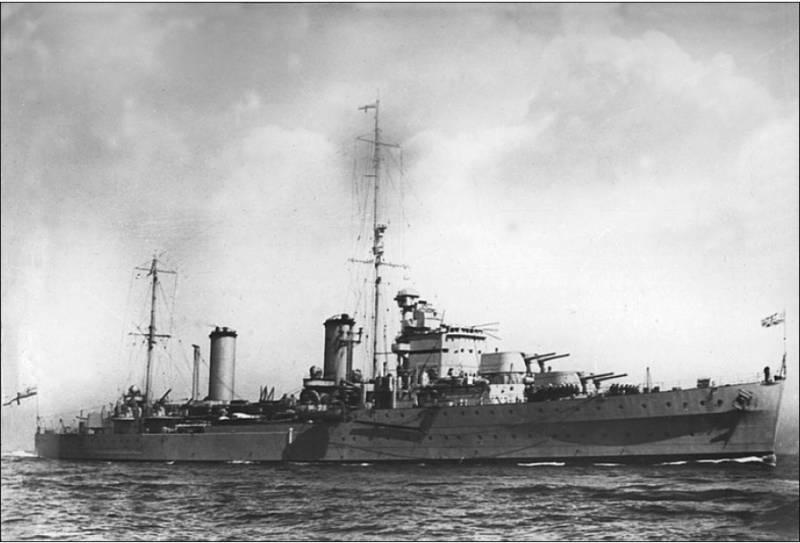
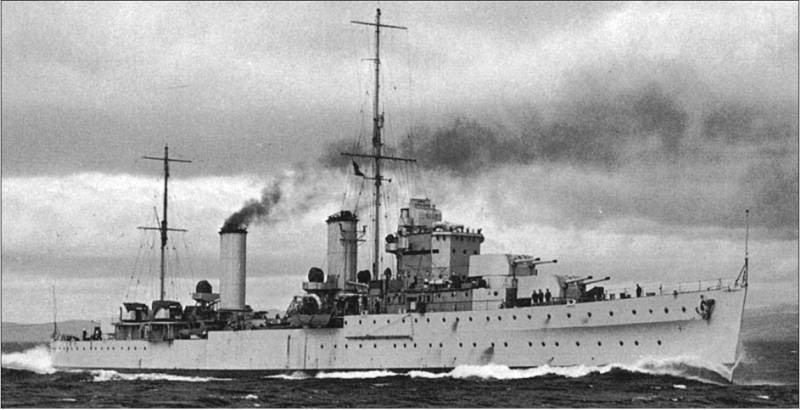
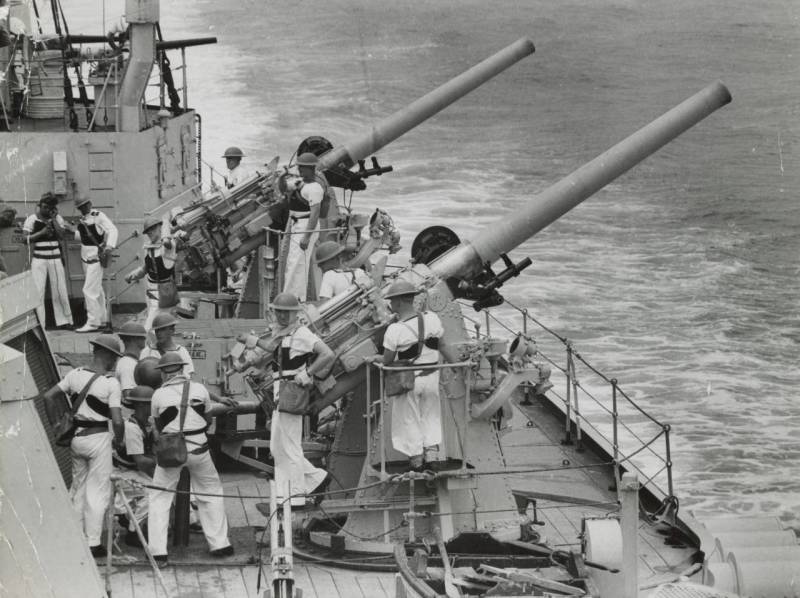
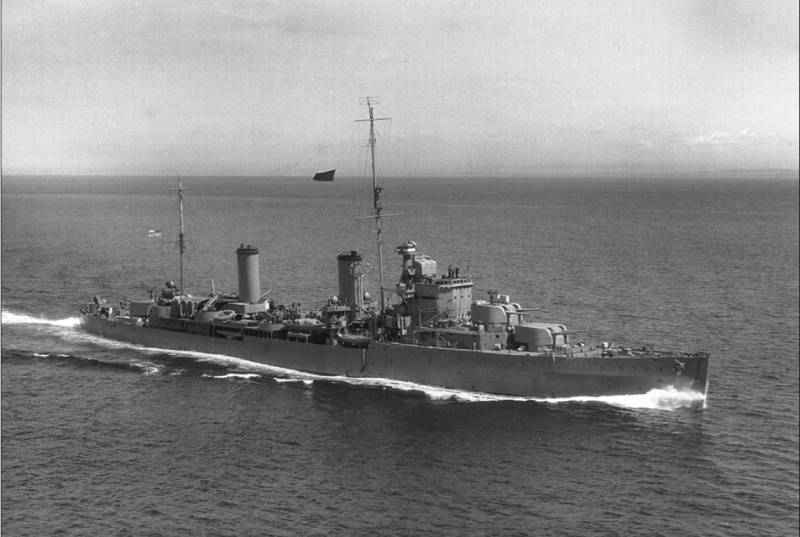
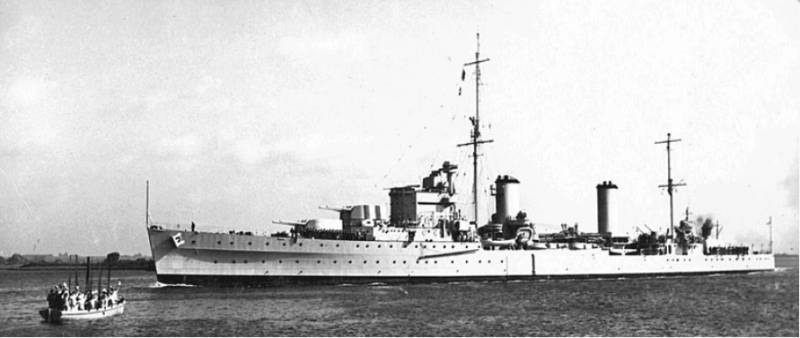
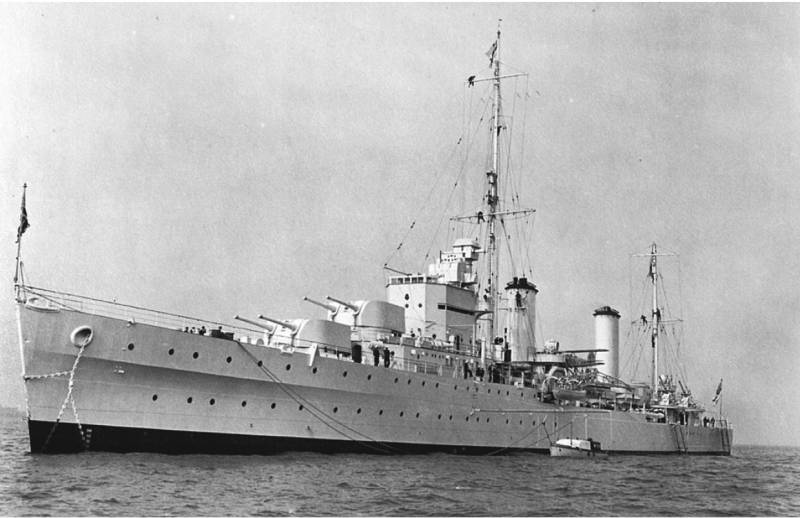
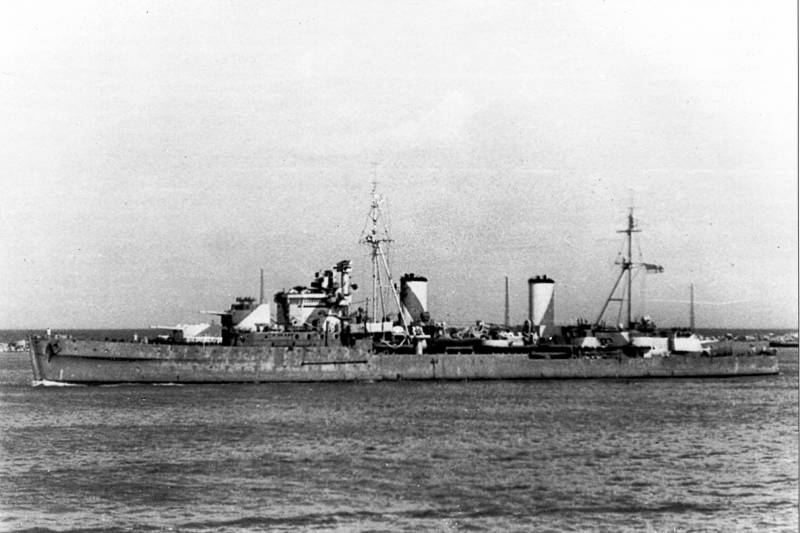
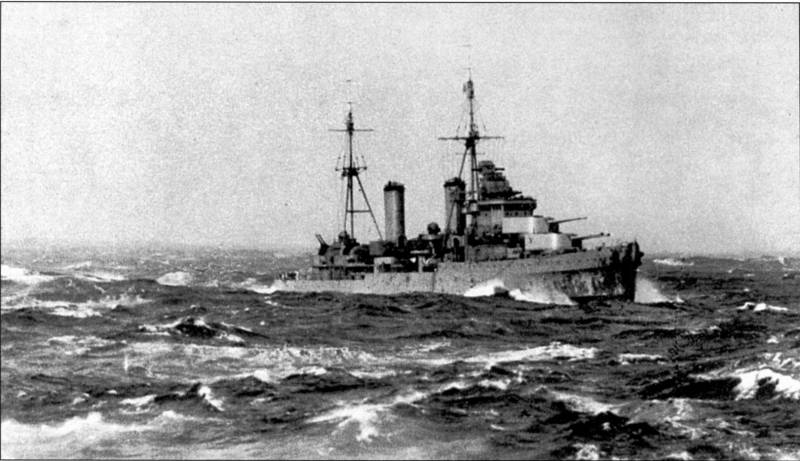
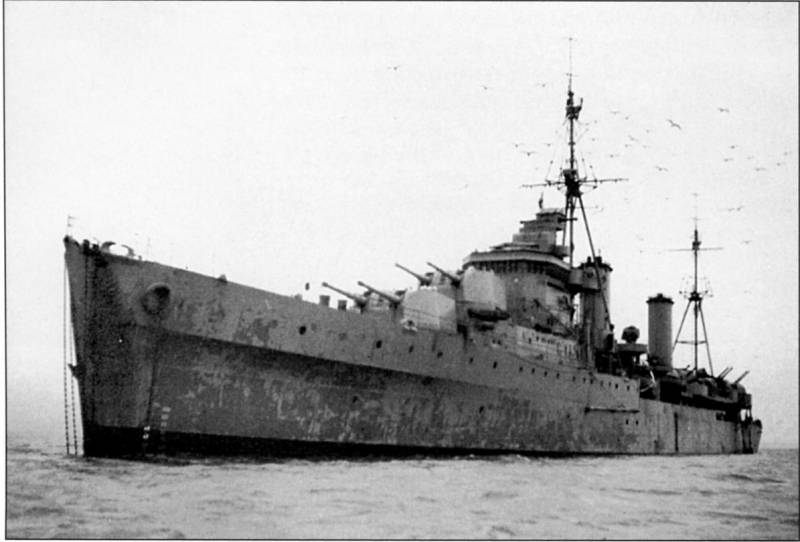
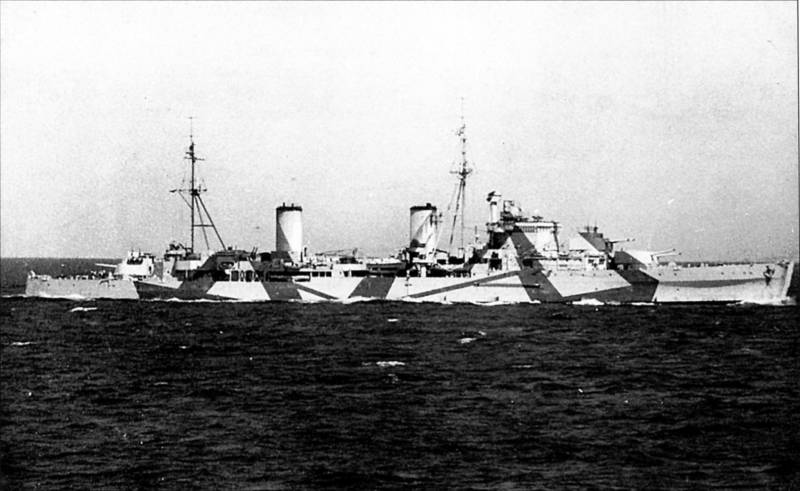
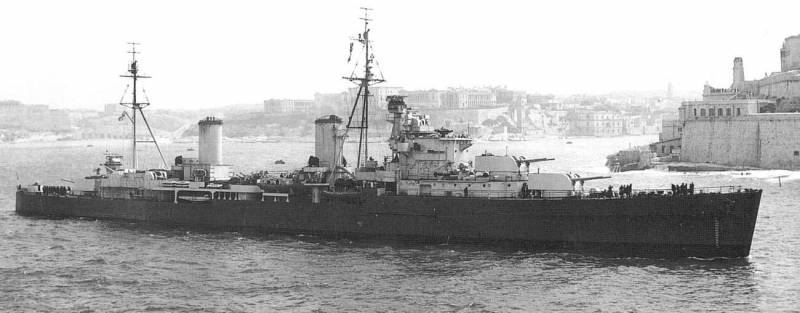
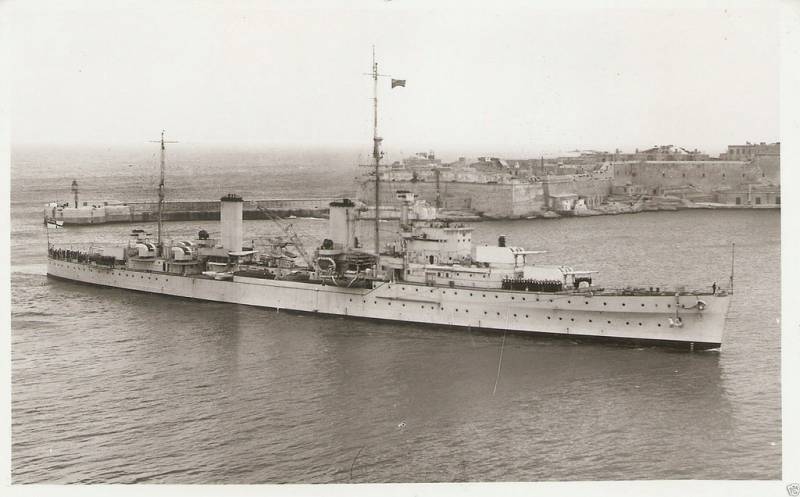
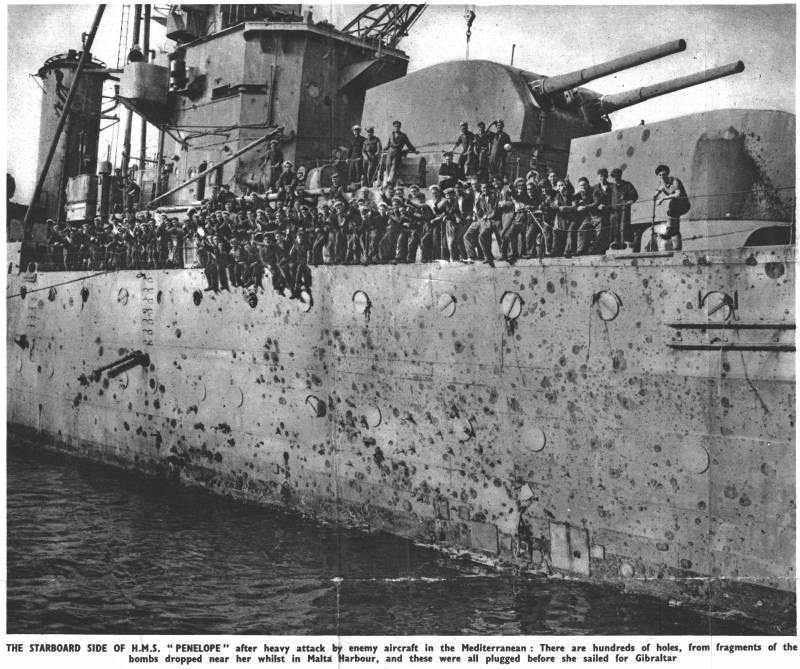
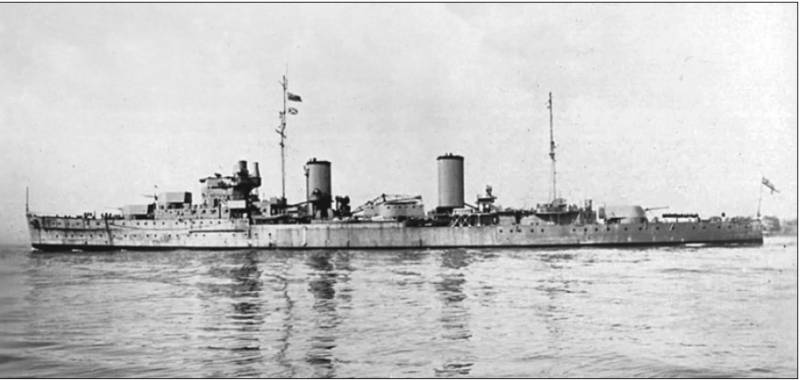
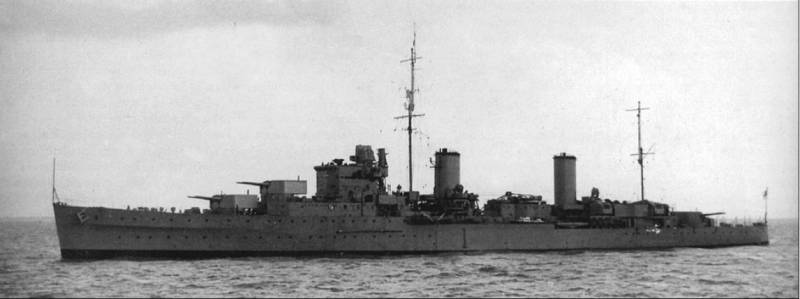
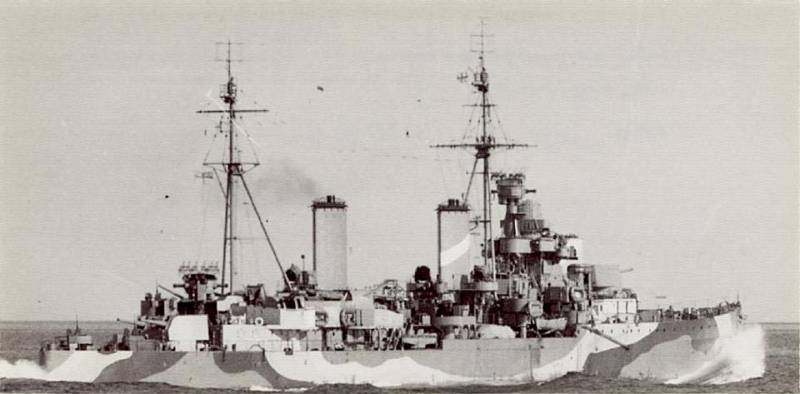
Information